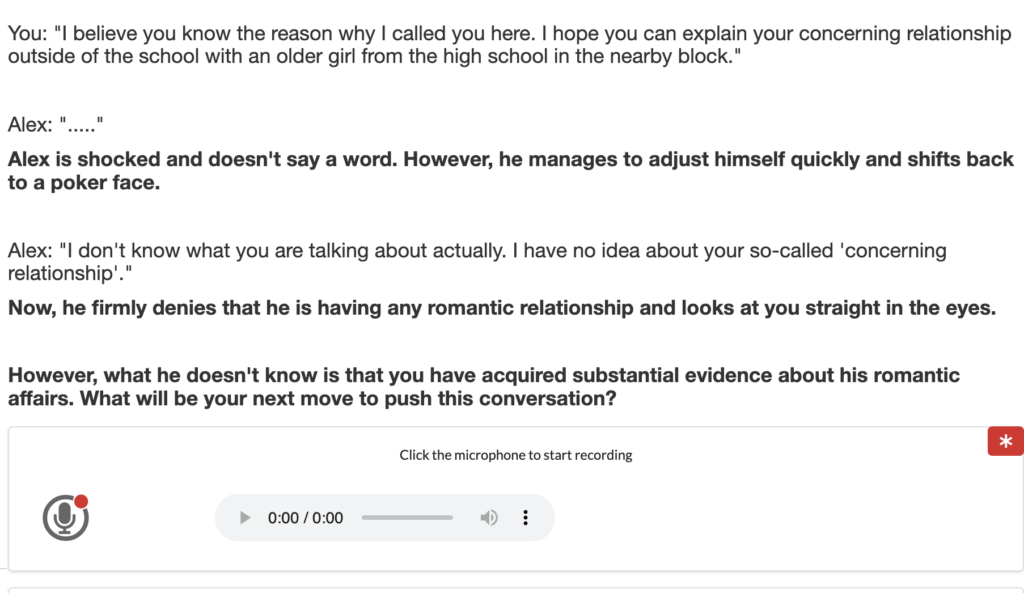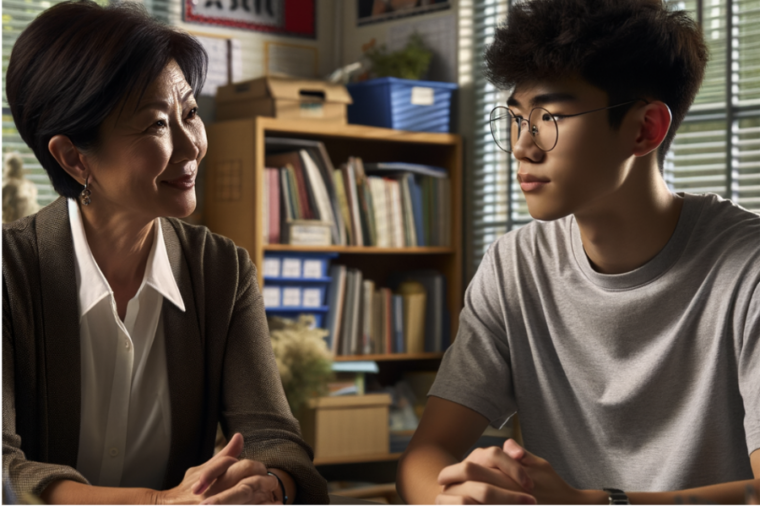(Picture generated by AI)
This project explores an interactive simulation designed to support Chinese middle school teachers in addressing underage romantic relationships—a topic often viewed as challenging and sensitive due to social norms and academic pressures in China. Built on the Teacher Moment platform, the simulation provides junior teachers with practical, repeatable scenarios to practice responding to adolescent romantic situations in a nuanced, supportive way.
The simulation guides teachers through a series of scenarios involving “Alex/Lihua,” a middle school student in a relationship, where teachers must respond to his/her emotions and attitudes. By allowing teachers to choose between various approaches, the simulation not only assesses their reactions but also promotes self-reflection on the boundaries of teacher involvement in student relationships. The design includes critical decision points, voice-over narration, and visual storytelling to enhance immersion, creating a safe space for teachers to experiment with different intervention strategies.
Design Features
Lively Contexts
- Contexts are provided through simulative dialogues with a strong sense of substitution and high verbal clarities.
- An immersive experience with vivid storytelling descriptions, and minimal visual information to expand imaginations

Strong Interactives
- Three interrelated but different plot lines and four key decision moments to explore.
- The ending depends on the critical choice made by participants, each with a distinct emphasis.

User-centered
- Participants will be asked to speak up about their responses for maximum dialogue simulation.
- Low-stake high-frequency practices are allowed to maximize the practice utilities
- Participants are welcome to log down their thoughts to co-create future iterations.
Design Thinking and Learning Features
The process of crafting this project has deepened my understanding of how learning design can scaffold sensitive social skills, blending cognitive and emotional engagement. It highlights the role of culturally responsive design by factoring in the high power distance typical in Chinese classrooms, where teacher authority may discourage open student dialogue. This sensitivity informed our decision to include scenarios where teachers practice adjusting their language and tone to foster open, supportive interactions. Additionally, the simulation’s data collection on participant choices and reflections allows for targeted feedback, empowering teachers to become more skillful in handling sensitive social issues, thus promoting healthier student-teacher relationships.
The project has emphasized the importance of combining cultural awareness, emotional intelligence, and interactive technology to bridge the gap between theoretical knowledge and practical application in teacher training. It also underlines the need for simulations that reflect the unique socio-cultural landscape of different educational settings, providing personalized, realistic experiences that align with teachers’ lived environments.



